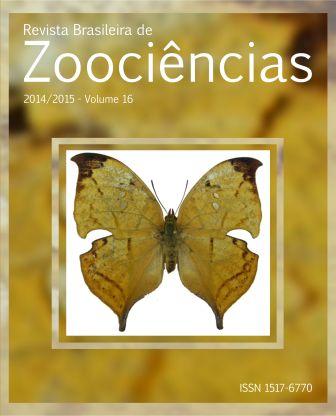Reproductive biology of the lambari Hyphessobrycon santae (Eigenmann, 1907) (Pisces: Characidae) in the Fazenda Lagoa do Nado Urban Park, São Francisco river basin, Minas Gerais/Brazil.
Abstract
In order to study the lambari Hyphessobrycon santae reproductice cycle, GSI, spawning, sex ratio and first maturation, a total of 223 individuals (124 females and 99 males) were captured, from November /2006 to October/2007 in the Fazenda Lagoa do Nado urban park, Belo Horizonte/Minas Gerais. Through macro and microscopic gonad features and variations in the GSI values, stages of the reproductive cycle were determined: 1: resting, 2: maturing/mature and 3: spawned for females and spent for males. An analysis of the stages of the reproductive cycle showed reproductively active fish year around, with an GSI peaks in March/April and September/October. Histological characteristics of ovaries containing post-ovulatory follicles next to oocytes in all phases of development indicate that H. santae presents multiple spawning. The smallest spawned females were in the 2.5 to 3.0 cm length class, while the smallest spent males were in the 3.0 to 3.5 cm class. This study can be used as a tool for the conservation of small characids in artificial environments that predominate in the São Francisco river basin, in Minas Gerais state.Downloads
Download data is not yet available.
Downloads
Published
2015-10-14
Issue
Section
Artigos



